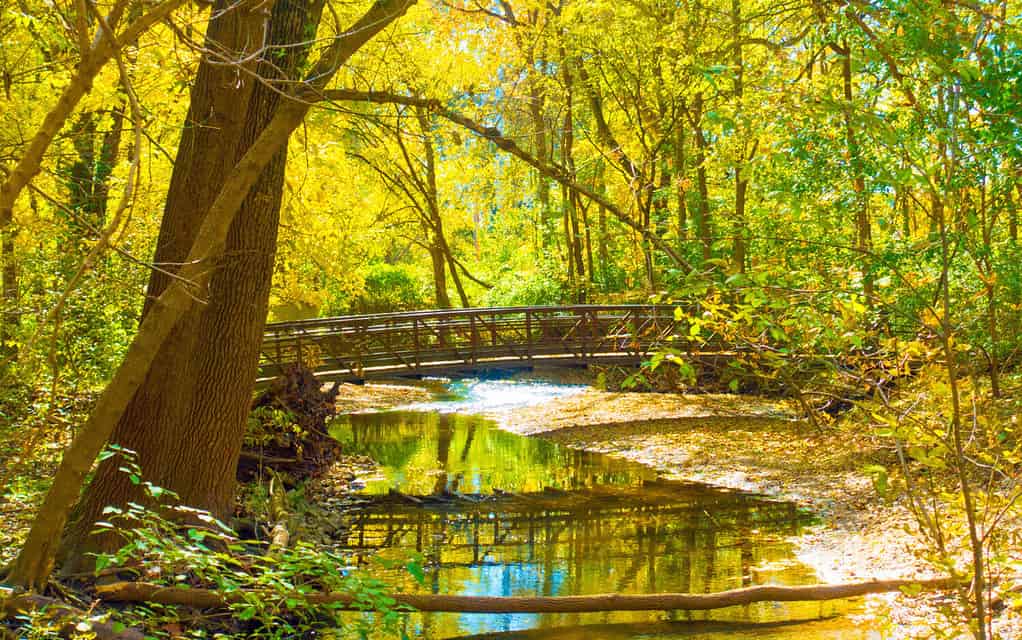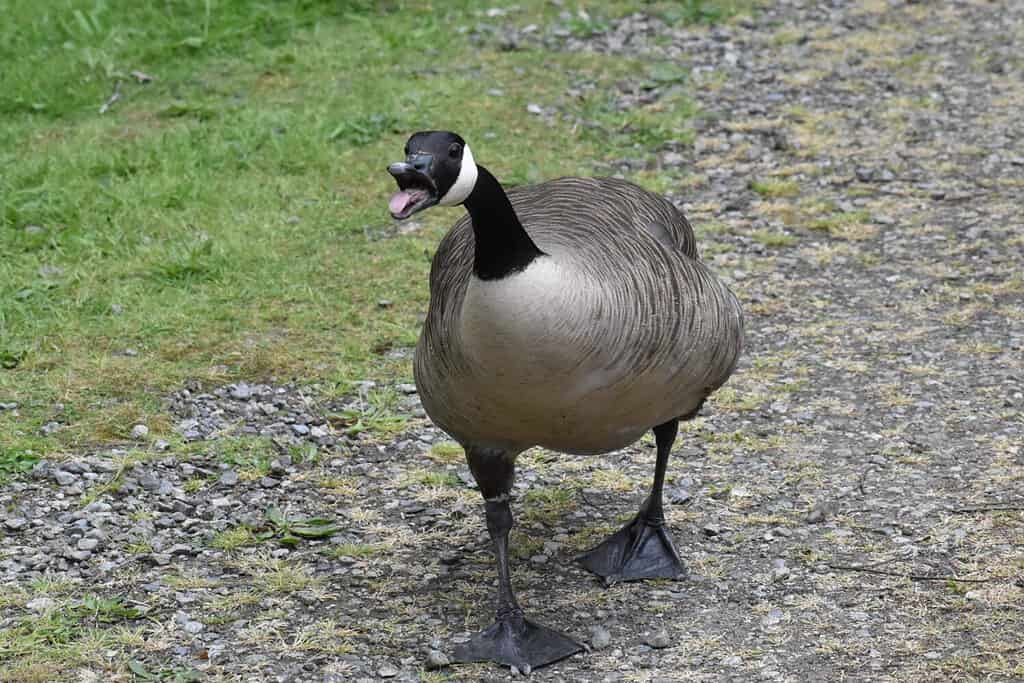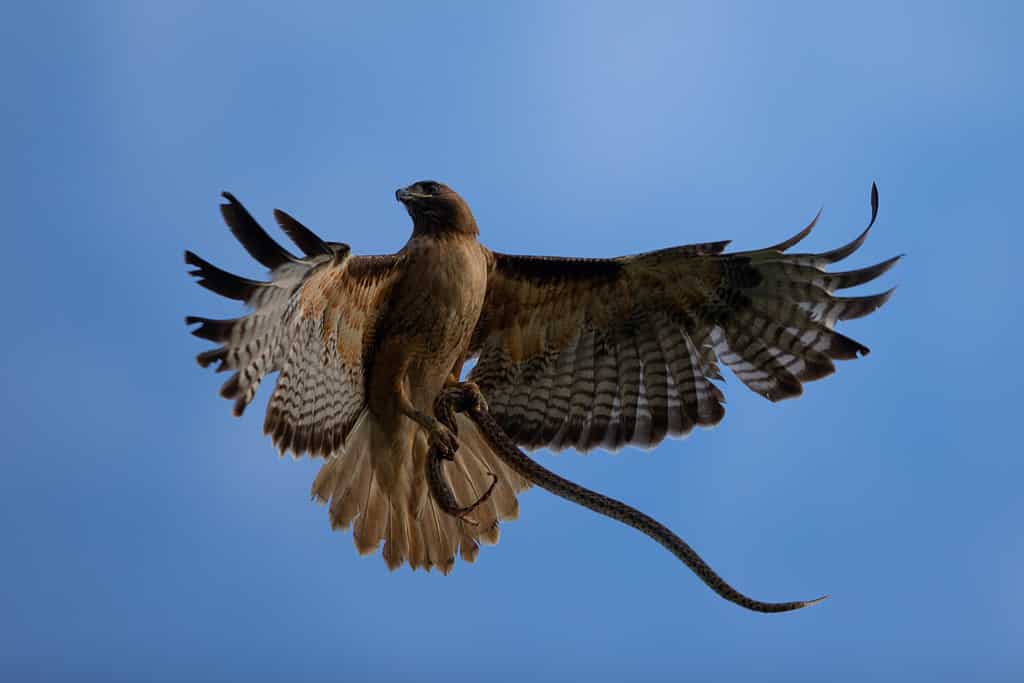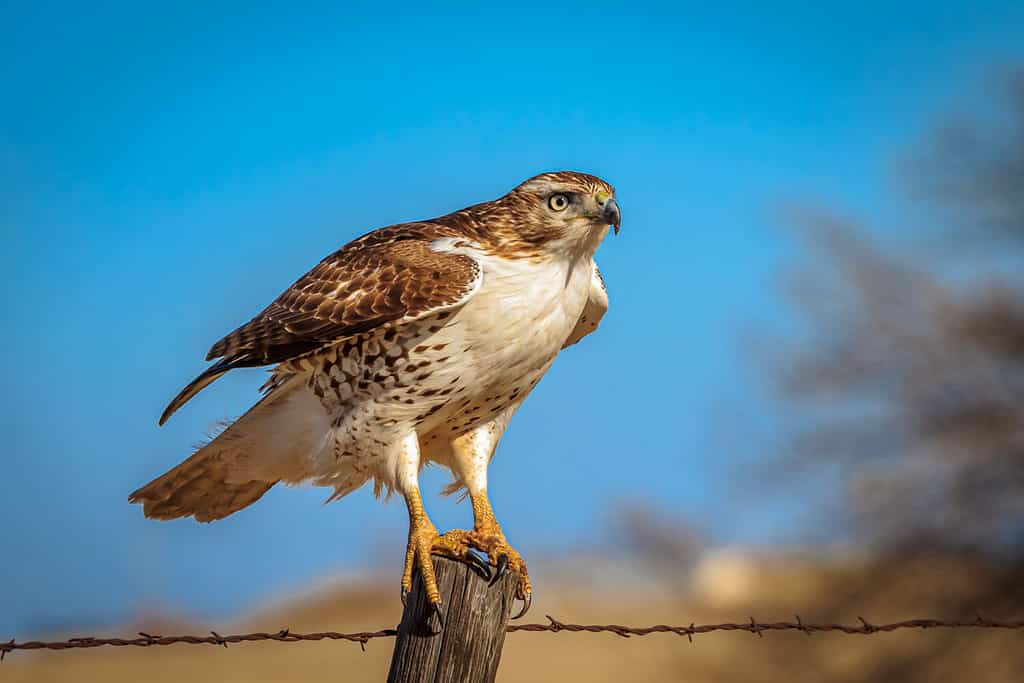The avid nature lover in Indiana might keep an eye out for bobcats, black bears, or coyotes when they’re out on a hike. They may want to look up, as well. Although bird species in Indiana do not often pose a serious threat to humans, there are some that can be dangerous in certain circumstances. Whether they attack people, livestock, or pets, these birds are not always just a nuisance. This article will explore the 3 most dangerous animals patrolling Indiana’s skies and describe exactly how they pose a threat to you and other animals.
Background
Habitats in Indiana
Forests

Hardwood forests, like this one in Howard County, are one type of habitat in Indiana.
©William Reagan/iStock via Getty Images
Indiana has a diverse range of habitats that each contribute to the state’s rich biodiversity. The variable landscape of Indiana gives rise to a mosaic of habitat types, spanning from the northern reaches of the Great Lakes to the southern hills and valleys. One prominent habitat type is deciduous forests, which dominate much of the state’s landscape. The southern regions, with their warmer climate, are home to expansive hardwood forests that host a multitude of tree species such as oaks, maples, and hickories. These woodlands are havens for a plethora of wildlife, including white-tailed deer, wild turkeys, and various songbirds.
Moving north, the landscape transitions into mixed forests, blending hardwoods with coniferous species like white pine and eastern hemlock. The northwestern region is characterized by a unique ecosystem known as the Indiana Dunes, boasting extensive sand dunes, wetlands, and a diversity of plant and animal species. This area along the southern shore of Lake Michigan provides critical migratory stopovers for numerous bird species.
Wetlands and Grasslands

Wetlands in Indiana support many species of plants and animals.
©William Reagan/Shutterstock.com
Another important habitat in Indiana is the wetland habitat. Wetlands play a crucial role in Indiana’s habitat diversity, offering vital ecosystems for amphibians, waterfowl, and aquatic plants. The state harbors both freshwater and coastal wetlands, with the latter located along Lake Michigan’s shoreline. In the central and southern portions of the state, wetlands serve as crucial water filtration systems and provide habitat for species like the rare eastern massasauga rattlesnake and various waterfowl.
In addition to forests and wetlands, Indiana encompasses grasslands, prairies, and savannas that support unique plant communities and provide vital habitats for grassland birds, insects, and small mammals. These habitats are often managed through restoration efforts to maintain their ecological balance. Overall, Indiana’s varied habitats showcase the state’s commitment to preserving its natural heritage and fostering a harmonious coexistence between human communities and the diverse ecosystems that call the Hoosier state home.
Bird Species in Indiana
Indiana’s avian biodiversity is immense. From majestic raptors like the bald eagle and red-tailed hawk soaring over open fields, to vibrant songbirds such as the indigo bunting and eastern bluebird gracing woodlands and gardens, the state is home to many winged wonders. Notably, the Indiana Dunes along Lake Michigan’s shoreline draw migratory birds during spring and fall. This area showcases an astonishing array of warblers, shorebirds, and waterfowl.
#1 Black Vulture
Description and Distribution

Black vultures have an intimidating cloak of black feathers.
©Holly Guerrio/Shutterstock.com
The first dangerous animal patrolling Indiana’s skies is the black vulture. Black vultures are distinctive birds of prey that live across parts of North and South America. These medium-sized scavengers possess a unique appearance characterized by their jet-black plumage. Their wingspan ranges from 4 to 5.5 feet (1.2 to 1.7 meters) and have a length of about 24 to 27 inches (61 to 69 centimeters). The vultures’ short, hooked beaks and strong talons, adapted for tearing into carrion, reflect their role as efficient scavengers. Their bare, bald heads are thought to be an adaptation to prevent bacterial buildup from feeding on decaying flesh.
In Indiana, black vultures are primarily in the southern and southwestern parts of the state. They are particularly prominent in areas with open landscapes, woodlands, and wetlands. Their range in the state is due to their preference for a mix of habitats that provide ample opportunities for scavenging and nesting. While historically more common in southern regions, black vultures have expanded their range northward in recent years. They often share habitats with their larger relative, the turkey vulture, but can be distinguished by their shorter tails and different flight patterns. These birds play a critical ecological role by cleaning up carrion and reducing the spread of disease.
Dangerous Interactions

Black vultures, although primarily scavengers, occasionally kill fresh prey.
©mauricholas / CC BY-SA 2.0 – License
Unlike turkey vultures, black vultures occasionally kill animals for food to supplement their usual scavenging diet. This aggressive behavior makes them a potential threat. They are primarily a danger to livestock animals. In fact, many farmers report that their livestock, including both adult cows and calves, endure injurious and fatal attacks every year. Other commonly affected animal species are piglets, lambs, and chickens. Although black vultures wreak havoc on livestock populations, they do not attack humans unless provoked.
#2 Canada Goose
Description and Distribution

Canada geese are incredibly common in North America.
©Krasula/Shutterstock.com
The second dangerous animal patrolling Indiana’s skies is the Canada goose. Canada geese are iconic waterfowl with a distinctive appearance and widespread presence. These large birds have striking black necks and heads and a contrasting white “chinstrap” marking just below their throats. Their bodies are primarily brownish-gray, with a paler underbelly. Adults typically measure between 30 to 43 inches (76 to 109 centimeters) in length and possess a wingspan ranging from 50 to 75 inches (127 to 190 centimeters). Their strong, sturdy bodies have special adaptations for both aquatic and terrestrial habitats. Canada geese are known for their distinctive honking calls, which are a familiar sound in various wetland and open landscapes.
In Indiana, Canada geese are a common sight throughout the state, inhabiting a range of habitats including lakes, ponds, rivers, marshes, and even urban areas. They are particularly prevalent during migration seasons, using the state as a vital stopover on their journeys. Some geese also reside year-round in Indiana, finding suitable nesting and feeding areas across the landscape. While many admire them for their graceful presence, their prolific populations have led to conflicts in certain areas due to their propensity for grazing on agricultural crops and altering local ecosystems.
Dangerous Interactions

Canada geese are territorial and can be aggressive towards humans and other animals.
©TheBirdyStore/Shutterstock.com
Canada geese often intimidate, chase, and bite people or animals that encroach on their territory or otherwise provoke them. They also have a history of attack unsuspecting people who have not antagonized them. In 2019, two people in Fishers, Indiana were attacked by a goose in a Walmart parking lot. One of the victims sustained a bite that was treated at the scene. In another incident, a police officer in Clarksville, Indiana was attacked by a Canada goose after unintentionally entering its territory. Canada geese are particularly aggressive when in breeding pairs and when protecting their nests.
#3 Red-tailed Hawk
Description and Distribution

Red-tailed hawks are a large species of raptor.
©ranchorunner/Shutterstock.com
The third dangerous animal patrolling Indiana’s skies is the red-tailed hawk. The red-tailed hawk is a prominent and widespread raptor that has a distinctive rust-colored tail, from which it derives its name. These majestic birds of prey display a range of color variations in their plumage, but most individuals have a brownish upper body with a pale underbelly. Adults also have a reddish-brown tail. Their wingspan typically ranges from 3.5 to 4.8 feet (106 to 146 centimeters), and their length spans around 18 to 25 inches (46 to 64 centimeters). Red-tailed hawks possess sharp talons and a powerful beak, both well-suited for capturing and consuming their prey. Their piercing, high-pitched screech is a characteristic sound often associated with open landscapes where they can be found soaring, searching for their next meal.
In Indiana, the red-tailed hawk is a year-round resident, widely distributed across the state’s diverse habitats. From rural farmlands to suburban neighborhoods and even forested areas, these adaptable raptors thrive in a variety of environments. They frequently perch on fence posts, telephone poles, or in treetops, where they scan the terrain for potential prey. Prey species primarily include small mammals like rodents and rabbits. Indiana’s combination of open spaces, mixed woodlands, and grasslands provides an ideal habitat for red-tailed hawks to hunt and nest. With their keen eyesight, aerial agility, and broad habitat tolerance, these raptors symbolize the wild beauty that can be found throughout the Hoosier state.
Dangerous Interactions

Red-tailed hawks have large, sharp talons that can inflict serious injury.
©Richard G Smith/Shutterstock.com
The red-tailed hawks speed, strength, and sharp talons not only make it a fierce predator, it also makes it a potentially dangerous presence in Indiana. In Indiana, residents have reported several red-tailed hawk attacks on small pets such as dogs and cats. Additionally, although these birds of prey rarely attack humans outright, they can become aggressive if they feel threatened. In 2015, numerous attacks on small dogs occurred in Highland, Indiana.
The photo featured at the top of this post is © Pascal De Munck/Shutterstock.com
Thank you for reading! Have some feedback for us? Contact the AZ Animals editorial team.






